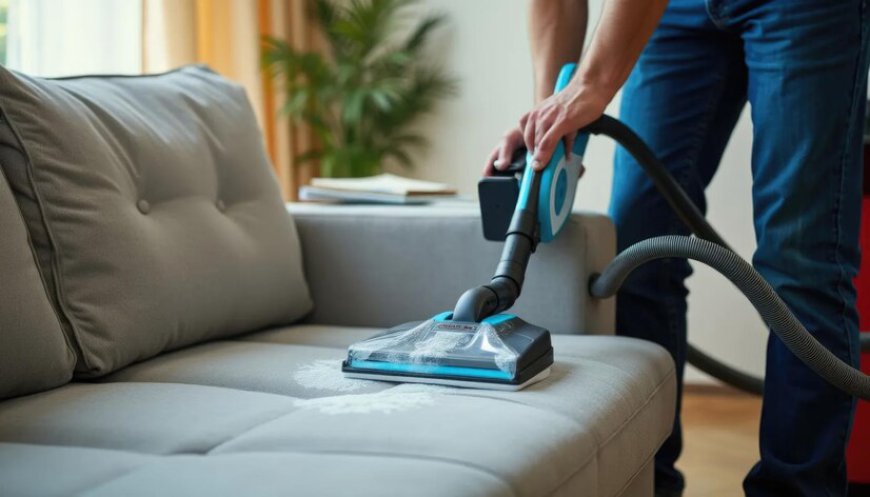Expert Secrets for Sofa, Carpet, and Upholstery Care – Removing Stains
Here is the comprehensive guide for professional sofa cleaning, carpet cleaning, and upholstery cleaning that will help determine what works best for most of the stains.

Soft furnishings indoors can become quite a big challenge in terms of keeping them looking clean and pure. Sofas, carpets, and upholstery tend to stain easily from anything from water to organic matter. Here is the comprehensive guide for professional sofa cleaning, carpet cleaning, and upholstery cleaning that will help determine what works best for most of the stains.
How to Know About Different Types of Stains
Before delving into specific cleaning techniques, it helps to know which types of stains you are likely to encounter:
1. Water-based: Includes spills from beverages, food, and bodily fluids.
2. Oil-based: Caused by substances such as grease, makeup, and some foods.
3. Protein-based: Those resulting from sources such as blood, eggs, and milk.
4. Tannin stains: Result from coffee, tea, wine, and some fruits.
5. Dye stains: Grass, ink, and some fabrics are the culprits behind such stains.
Identifying what type of stain it is provides you with the correct cleaning approach.
Good Cleaning Tools
These will help you clean up marks from all sources:
-
White microfiber cloth
-
Soft-bristled brushes
-
Vacuum cleaner with upholstery attachment
-
Enzyme-based cleaners
-
Solution of vinegar
-
Baking soda
-
Hydrogen peroxide
-
Commercial stain removers suitable for each fabric
Those tools and products at your disposal will help make it easier to enter into removal right away.
General Techniques for Removing Stains
Specific stains may call for specific approaches, but some general techniques apply in most situations:
1. Act fast: The sooner you treat a stain, the greater your chances are for an effective removal.
2. Blot, don't rub: Gently blot with a clean white cloth. If you apply too much pressure and rub it, you will extend the stain and cause damage to the fibres.
3. Work from the outside in: Start cleaning at the edges of the stain and work your way inward to prevent further spread.
4. Test in an inconspicuous area: Before using any cleaning solution, test it on some inconspicuous part of the fabric to ensure it won't damage or discolour it.
5. Use the correct cleaning solution: Choose a cleaning agent to suit the type of stain, as well as the type of fabric that needs cleaning for the best outcome.
Common Stains Sofa Cleaning
Sofas can be so central to living rooms and are very susceptible to all sorts of stains. For water-based stains on a sofa, consider blotting out the excess liquid with a clean, dry cloth, then mix a small amount of dish soap with warm water and apply the solution very gently to the stain using a cloth. Rinse out with clean water and blot dry.
For oil-based stains, sprinkle baking soda to the stain and leave it overnight for 15-20 minutes. Use a vacuum cleaner to clean up the baking soda and spot the stain with a mix of equal water and white vinegar. You should blot the stain with a cloth and repeat if needed.
Carpet Cleaning: How to Remove Tough Stains
Carpers sometimes get drenched in footfalls and spills, leading to unstoppable stains. Carpet red wine stains can be treated by blotting up as much of the wine as possible from the stain. For carpet cleaning, apply a solution containing dish soap, white vinegar, and warm water and gently brush into the stain. Then, rinse and blot dry with clean water.
Pet stains call for special handling. Blot as much of the stain as possible first. Then, follow with an enzyme cleaner designed specifically for pet stain removal. Let it sit as directed, then blot with a clean, damp cloth to pull up both the cleaner and the stain.
Upholstery Cleaning: Saving Sensitive Fabrics
Upholstery can often require special attention because upholstery can consist of many different types of fabrics. Blot the stain with a cloth that has been dampened in rubbing alcohol. Gently blot and turn the cloth to a clean area as the ink bleeds onto it. Rinse with a clean, damp cloth and let air dry.
Grease stains on upholstered furniture can be treated by sprinkling cornstarch or talcum powder over the stain. Allow to set for 15 to 20 minutes to absorb the grease, vacuum the powder off, and reinspect the stain. If the stain is still present, use a small amount of dry upholstery cleaning solvent placed onto a cloth and blot the stain until it is removed.
Professional Cleaning Services: When to Call in the Experts
Most stains will be manageable with household supplies and some knowledge of how to clean various different types of stains. However, there are situations which require professional intervention. Professional cleaners have equipment and agents on hand that can target and remove even the most recalcitrant stains.
The Bottom Line
Fighting most household stains depends on whether you understand what each stain is and the kind of techniques and cleaning solutions to use. Most stubborn stains that are problematic require professional services; hence, it's advisable to get in touch with services like Dublin Sofa Cleaning to get expert aid that lasts long and is free of doubts.
